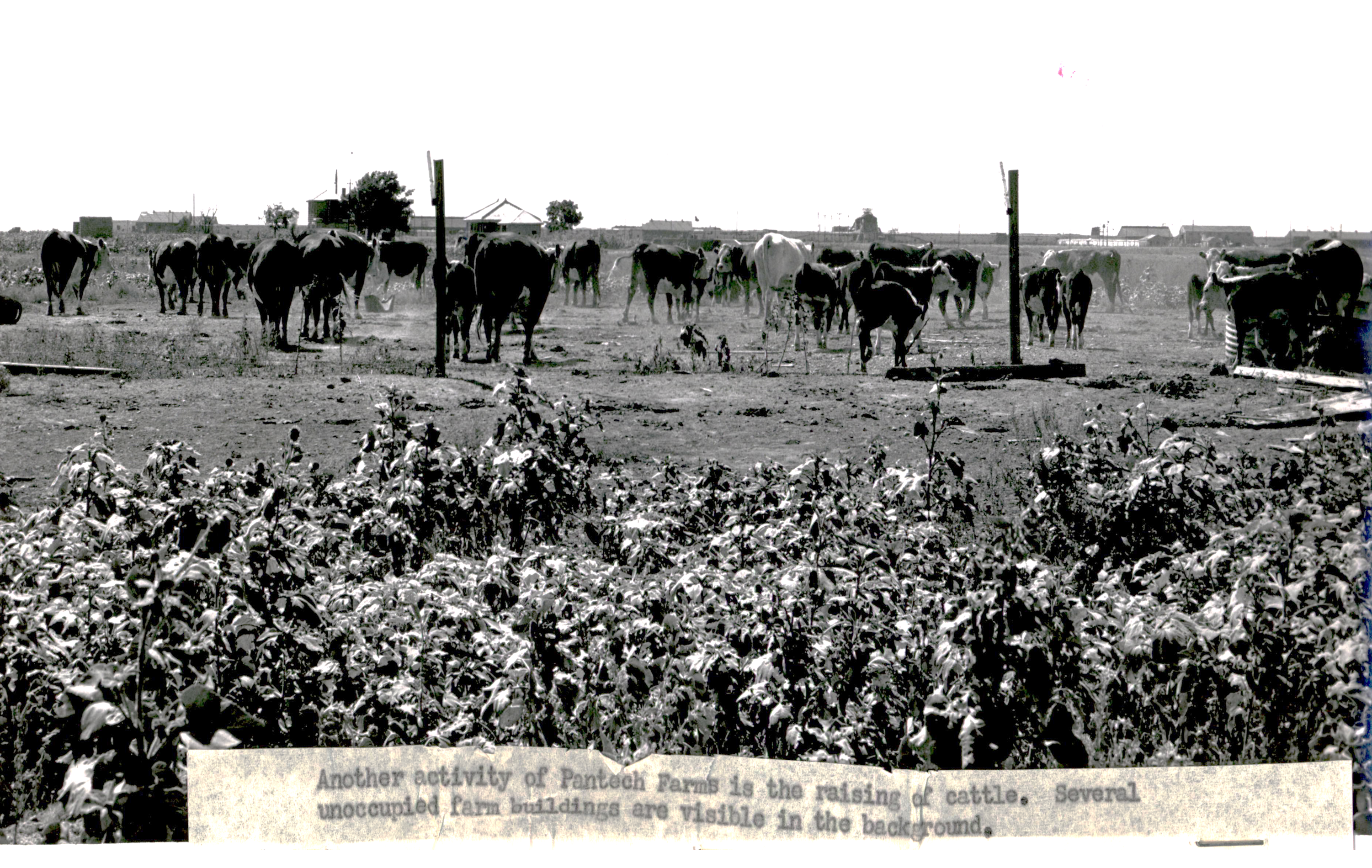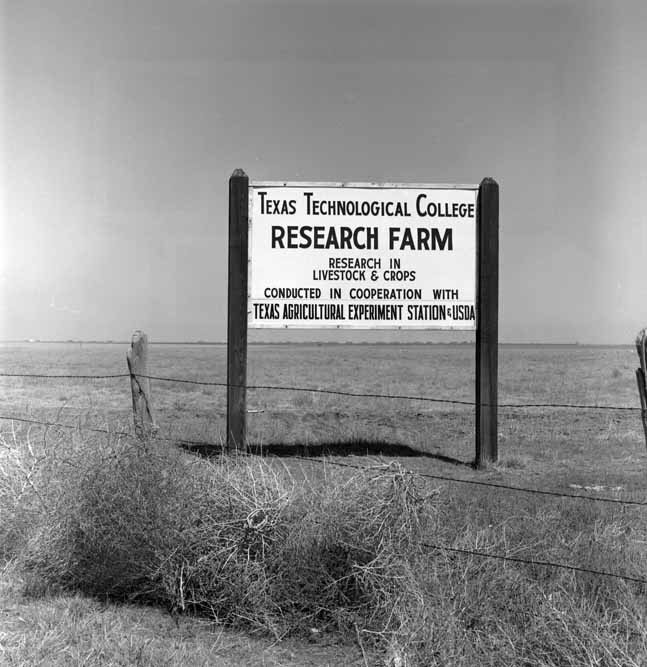Partnership with Raider Red

Earliest photo of cows grazing on the Texas Technological College Research Farm on Pantex site.
A partnership since 1948 featuring Red Raider land in Pantexan country is still strong today.
After the end of World War II, the plant was closed and vacated. Texas Technological College, known as Texas Tech University today, made a bid to the federal government in 1946 to use some of the land at Pantex for agricultural projects. United States Senator for Texas Lyndon B. Johnson, advocated for Texas Tech to receive a fair deal from the government. In 1948, Tech was deeded an initial 8,000 acres of south Pantex land to begin agricultural and education operations. The remaining 8,000 acres was deeded in 1949, bringing the total of Red Raider territory to 16,000 acres.
“Agriculture is the bread and butter of this region, so it made sense to have an agriculture research center. At the time, current Texas Senator Lyndon B. Johnson wanted Tech to have a fair deal from the government so he advocated for the school,” said Katie P., Pantex historian.
In 1951, the land was repossessed by the federal government through a recapture clause for national security. The service agreement between the college and the government stipulated the land had to be used for agricultural research and education for 20 years. After that, money could be made off the land. The agreement was a success for years and modernization efforts became a priority in the 1990s.
“Ranching and farming technology was from the ‘50s when I came on in 1994, so the Department of Energy asked me to come up with some plant conservation-management plans,” said Monty S., Pantex agronomist.
Modernization happened with the one-way plows being replaced, no-till practices adopted, water-conservation efforts emphasized, field bind weeds cleaned up, and grazing rotations implemented. It is important for a research farm to be in premiere condition.
“Land management at the site is a reflection to our neighbors. By having cultivated and range land mix, it is a huge protection against wildfires and protects our plant mission,” Monty said.
The research farm is run by a Texas Tech-employed farm manager. Jason G. has served in that capacity since 2014. His role is to manage and operate the farm for Texas Tech University while working with the management at Pantex.
“This relationship has been in place since World War II. People come and go, contractors come and go, but the relationship with Tech and Pantex is still there,” said Jason, Texas Tech University assistant director of farm operations.
There are benefits to both parties in the relationship.
“It is not only a local partnership with a prestigious university but it has been such a lucrative partnership,” said Katie. “It is important for agriculture research to continue into the future.”
The future looks bright for Red Raiders at Pantex—both in farming and in employment opportunities.
“It is not only the farm; it is the relationship with all Pantex departments,” said Green. “I can go to Lubbock to Tech’s campus and you run across someone that knows someone at Pantex. I would like to see that relationship continue to grow.”
The most recent extension of the partnership is in an effort to encourage academic innovation and enhance the hiring pipeline between Texas Tech students and Pantex. The Pantex Innovation Challenge, which happened last fall, provided students with the opportunity to work directly with Pantexans to solve real-world problems.
“Partnering with Texas Tech is a beneficial partnership for both parties, as evidenced by our long and rich history of working together,” said Colby Yeary, Pantex site manager. “Pantex benefits the land management and interaction with students who could become future Pantexans while Texas Tech students learn from hands-on experiences.”

Entrance sign from 1962 for the Texas Technological College Research Farm.
